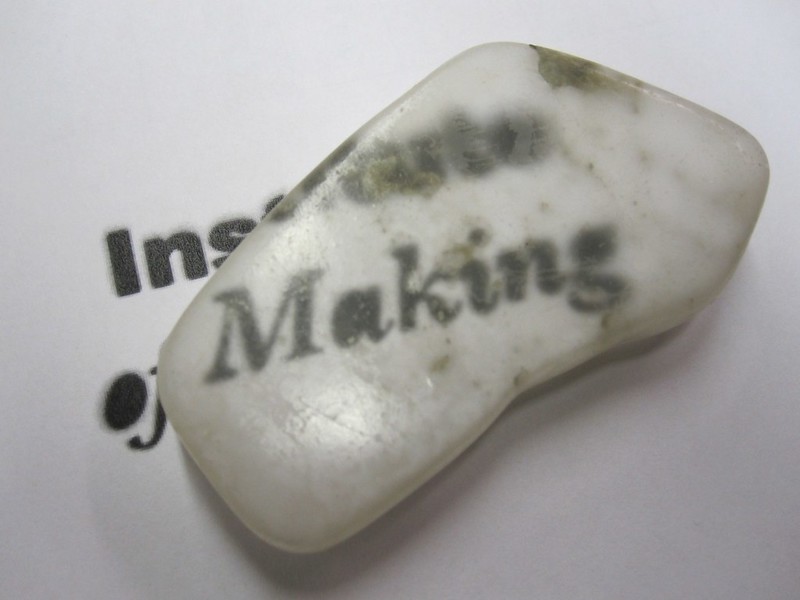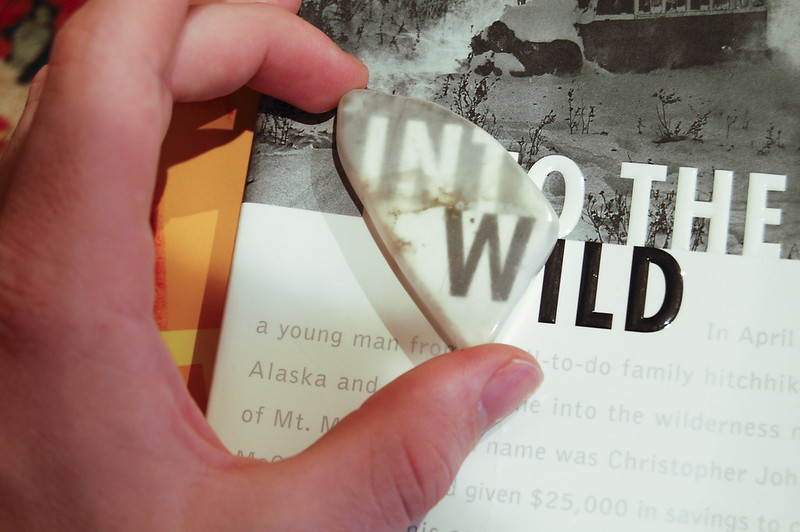Ulexite is a strange, fibrous mineral with some interesting optical properties. It’s sometimes referred to as television stone, owing to the strange visual properties that it carries. It’s a complex matter and one that takes a bit of study to figure out.
So, without further ado, let’s break in with our guide to ulexite, and see if we can’t shed some light on this fascinating mineral.
What Is Ulexite?

Ulexite is a boron mineral, specifically hydrated sodium calcium borate hydroxide. It appears as bundles of transparent fibers tightly “bound” together. Both forms are highly sought after, for different reasons.
Boron: Rare and Useful
Boron is a very rare element, found in high concentrations in only a few places across the planet. It’s also used in a surprising amount of processes that are essential to our modern lifestyle. For instance, borosilicate glass is preferred over other types when heat or thermal shock may be an issue since it resists both of those quite well.
You probably have some borosilicate glass in the kitchen. It’s generally called Pyrex, in the same way that Band-Aid has become the common word for adhesive bandages.
Boron is never found in its elemental form in nature. Instead, it’s found in a wide range of different minerals. Many of these are of commercial importance, but the three main sources of boron for industrial use are ulexite, borax, and colemanite.

Boron is also used to harden steel when added to alloys.
Overall, it’s useful stuff even when it’s not of interest to mineral collectors. Ulexite is a standout option due to occurring in relatively large amounts when found and being easy to process in order to liberate the boron molecules for use.
Ulexite is also being explored as a starting medium for sodium borohydride. This compound is thought to be an ideal storage mechanism for hydrogen fuel cells due to its high weight-to-hydrogen ratio.

Ulexite Found in Evaporite Deposits
Ulexite is most often found in evaporite deposits.
These deposits are a bit strange in how they form. Essentially, stones were thrown from volcanic activity, termed pyroclastic, which contained boron. Water flowed over these stones and to lower ground, slowly removing minerals from the stones. These include boron minerals, such as borax and ulexite.
In general, you’ll find evaporite deposits in dry lakes. A dry lake is one that fills up with water during the rainy season but loses water quicker than it gains it. This results in the lower ground being encrusted with salts picked up from the pyroclasts.
Over time, these can often form into a stratum. A stratum is a specific layer of stone, so an area with large amounts of boron will often end up with layers comprised entirely of borate beneath the surface.
Evaporite deposits are known to contain many boron minerals, from howlite to ulexite, and also contain things like halite, gypsum, and calcite. These minerals are all soluble in water to some extent.
Because of this, you’ll want to make sure that you don’t expose any ulexite samples you have to water. Hot water, in particular, will dissolve or damage your sample. If you do need to rinse dust or dirt off of a specimen, it’s best to use a rag that’s been made damp with cold water.
The “TV Stone”

Ulexite is often called the “TV Stone” due to its strange optical properties. The fibrous form of the mineral transmits light somewhat like a fiber optic cable. When cut across these fibers, it can transmit an image clearly.
This is incredibly rare with natural minerals, the only other one known to do so is fibrous selenite. Selenite, however, does not transmit nearly as clear of an image. Keep in mind that this is different than the mineral simply being transparent, instead, the image is actually projected onto the surface of the ulexite.
Essentially, the internals of these fibers are perfectly reflective. The fibers themselves are about 2 micrometers across. This only works when the fibers are parallel to the image you’re trying to project. If you rotate the stone 90 degrees it no longer displays the properties.

Large samples of ulexite in this form are vanishingly rare. The problem is the same as the reason it forms. Quite often you’ll also find mud or other inclusions that were trapped during the formation of the mineral. These can obscure the view and render it more fit for industrial use than demonstrating its natural fiber optic qualities.
Pieces a few inches across are common finds on any site that sells minerals, and for many people, this may be the only way to collect it.

“Cotton Balls”
Ulexite is sometimes found in a form that resembles a cotton ball. You’ll also see this form referred to as “bunny tails” in some places.
These are actually comprised of small, needle-like crystals. While an interesting specimen, people are generally more interested in finding the larger masses of fibrous crystals since the tufts can’t be worked into a form that shows off the unusual characteristics of the mineral.
That said, the acicular form can make for incredible specimens. This form is very fragile, however, and care must be taken when searching for it. They generally grow in hollows in the bedrock.
The acicular formations may be found singly, or in overlapping patterns. Some of these can be quite dramatic in effect. Unfortunately, this form is also hard to find for sale since there’s not much demand for it.
Where Is It Found?
Ulexite shows up in varying degrees in most evaporite deposits that have boron in them.
The most prevalent source of the material is the Boron Pit in Boron, California. Unfortunately, you’re probably not going to be able to collect from this area. While there is an area farther down the mountain where the tailings are dumped, this is both not allowed and incredibly dangerous.
The Boron Pit is actually the world’s largest borax mine. It’s a pit mine with an enormous circumference and 755 feet or so deep.
However, the mineral isn’t hard to acquire. A single individual, David Eyre of Desert Discoveries has an exclusive contract to collect the optical grade ulexite which is removed from the mines owned by Rio Tinto. These include the Boron Pit and the ubiquitous 20 Mule Team Mine.
You may be able to find the acicular form in some of the abandoned boron mines in California, but you’ll need to make sure that you’re not on private property, or at least have permission to be there.
Fortunately, optical ulexite is widely available online if you really want to own a piece of this natural oddity.

